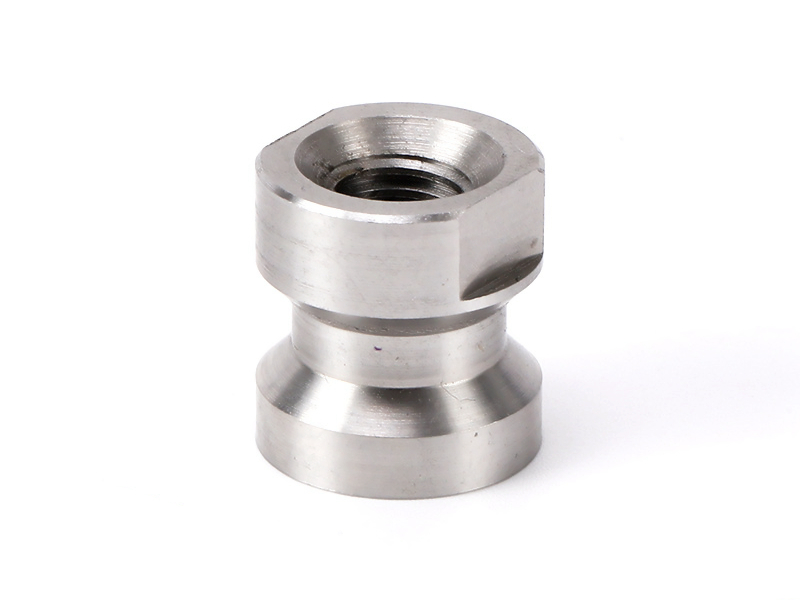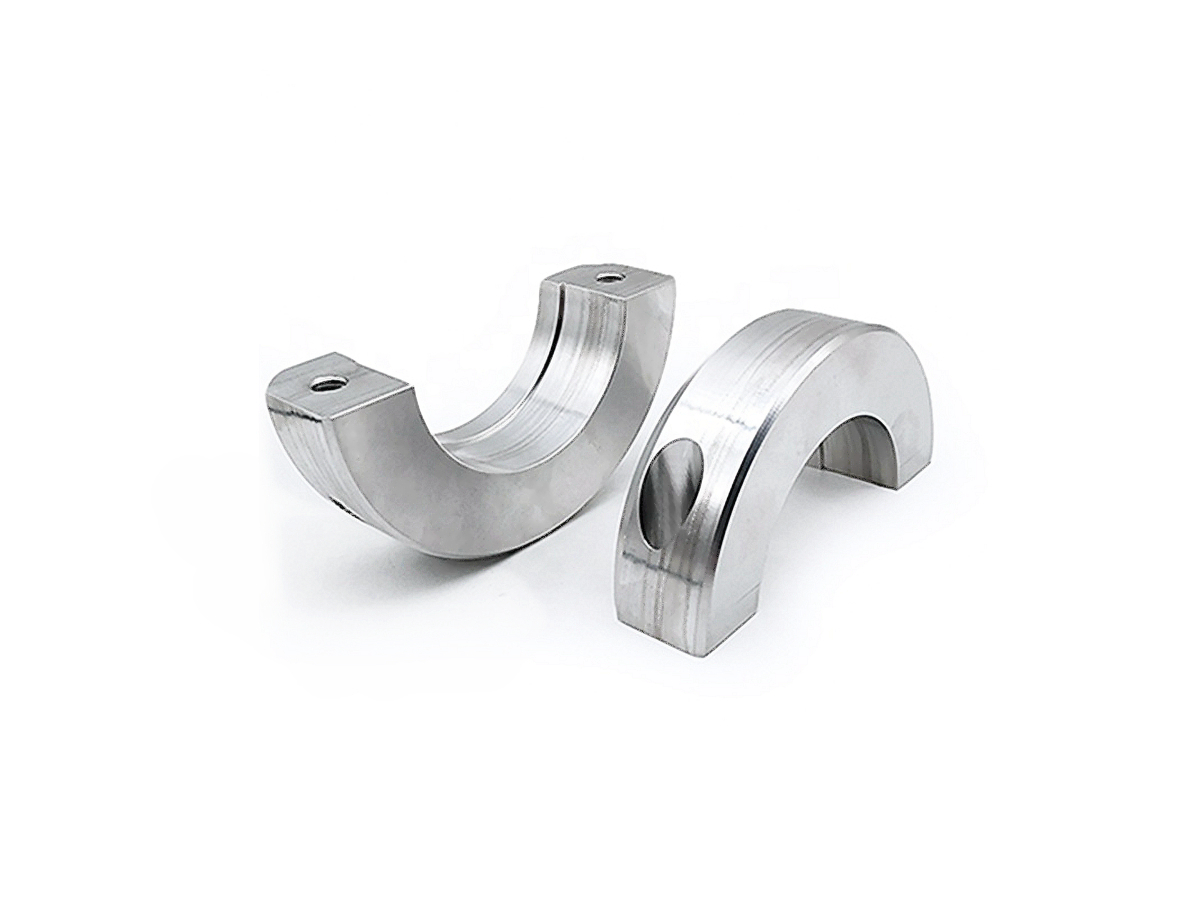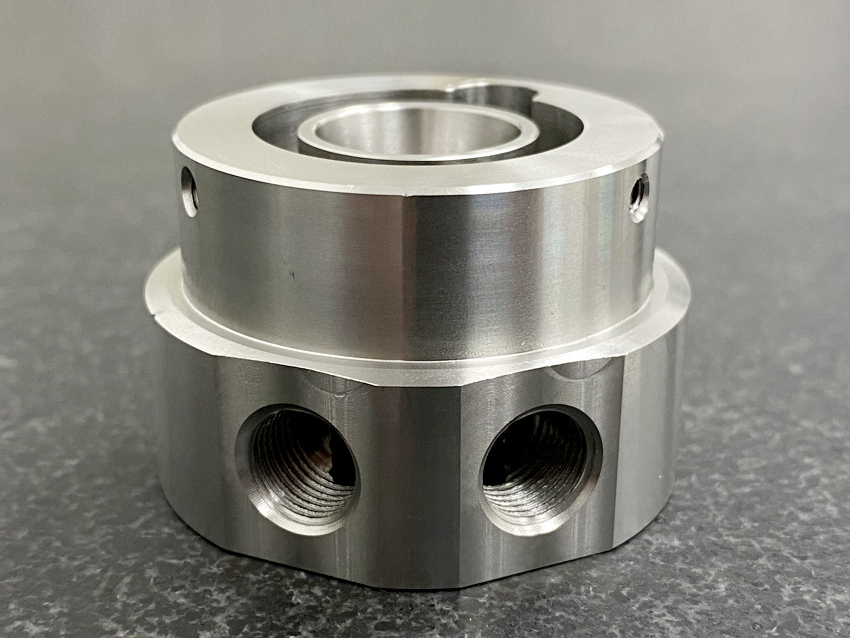Stainless Steel SUS201
Introduction to Stainless Steel SUS201: A Versatile Material for Corrosion Resistance
Stainless Steel SUS201 is a cost-effective austenitic stainless steel alloy with good corrosion resistance, formability, and strength. It contains higher levels of manganese and nitrogen compared to SUS304, which enhances its mechanical properties. With its low nickel content, SUS201 is an affordable alternative to 304 stainless steel, making it ideal for various industrial applications where both performance and cost-efficiency are essential.
SUS201 is particularly known for its ability to resist corrosion in mildly corrosive environments. It is commonly used in kitchen equipment, architectural elements, and general industrial machinery applications. In CNC machining, SUS201 is often processed to produce high-quality parts and excellent surface finishes. CNC-machined SUS201 stainless steel parts are widely used in the automotive, food processing, and construction industries, offering both durability and aesthetics.
SUS201 Stainless Steel: Key Properties and Composition
SUS201 Stainless Steel Chemical Composition
Element | Composition (wt%) | Role/Impact |
|---|---|---|
Carbon (C) | ≤0.15% | Low carbon content enhances weldability and reduces carbide precipitation. |
Manganese (Mn) | 5.5–7.5% | Increases strength and enhances corrosion resistance compared to standard 304. |
Chromium (Cr) | 16.0–18.0% | Provides corrosion resistance and contributes to the alloy’s strength. |
Nickel (Ni) | ≤5.0% | Reduced nickel content compared to SUS304, making it a more cost-effective option. |
Nitrogen (N) | 0.25–0.75% | Enhances strength and corrosion resistance, especially in acidic environments. |
SUS201 Stainless Steel Physical Properties
Property | Value | Notes |
|---|---|---|
Density | 7.93 g/cm³ | Standard for austenitic stainless steels, providing reasonable weight. |
Melting Point | 1,400–1,450°C | Suitable for both cold working and high-temperature applications. |
Thermal Conductivity | 16.2 W/m·K | Moderate heat dissipation, suitable for general-use applications. |
Electrical Resistivity | 7.4×10⁻⁶ Ω·m | Low resistivity, ideal for structural and non-electrical applications. |
SUS201 Stainless Steel Mechanical Properties
Property | Value | Testing Standard/Condition |
|---|---|---|
Tensile Strength | 520–720 MPa | ASTM A240/A240M standard |
Yield Strength | 240 MPa | Suitable for structural applications requiring moderate strength. |
Elongation (50mm gauge) | 40% | High ductility for forming and welding applications. |
Brinell Hardness | 160 HB | Soft state, easy to machine and weld. |
Machinability Rating | 55% (vs. 1212 steel at 100%) | Optimized for turning, milling, and drilling in CNC machining. |
Key Characteristics of SUS201 Stainless Steel: Benefits and Comparisons
SUS201 stainless steel is often compared to other alloys such as SUS304 Stainless Steel and SUS316 Stainless Steel, as these materials are commonly used in similar applications. Below is a comparison that highlights the unique advantages of SUS201.
1. Optimized Corrosion Resistance
Unique Trait: While not as resistant as SUS304, SUS201 provides good corrosion resistance in mildly corrosive environments.
Comparison:
vs. SUS304: SUS304 offers superior corrosion resistance, but SUS201 is a more affordable option with acceptable performance in many applications.
vs. SUS316: SUS316 offers excellent resistance to chlorides and acidic environments, making it ideal for marine applications, while SUS201 is better for cost-sensitive projects.
2. Cost Efficiency
Unique Trait: SUS201 is more affordable than SUS304, making it ideal for applications that do not require the higher corrosion resistance of 304.
Comparison:
3. Superior Formability and Weldability
Unique Trait: The low carbon content in SUS201 enhances weldability and reduces carbide precipitation, ensuring strong welds without the need for preheating.
Comparison:
4. Dimensional Stability
Unique Trait: SUS201 has good dimensional stability under machining processes, providing tolerances of ±0.05 mm in CNC operations.
Comparison:
5. Post-Processing Flexibility
Unique Trait: SUS201 can undergo a wide range of post-processing treatments, including polishing, PVD coating, and passivation, providing a good combination of durability and aesthetics.
Comparison:
CNC Machining Challenges and Solutions for SUS201 Stainless Steel
Machining Challenges and Solutions
Challenge | Root Cause | Solution |
|---|---|---|
Work Hardening | High manganese and nitrogen content | Use carbide tools with TiN coatings and optimize feed rates to reduce tool wear. |
Surface Roughness | Slight "tearing" due to high ductility | Use climb milling techniques and adjust cutting speeds for smoother finishes. |
Burr Formation | Softer material properties | Increase spindle speed and reduce feed rates during finishing operations. |
Dimensional Inaccuracy | Residual stresses from cold rolling | Perform stress-relief annealing at 650°C for dimensional stability. |
Chip Control Issues | Stringy, continuous chips | Use high-pressure coolant (7–10 bar) and implement chip breakers for better control. |
Optimized Machining Strategies
Strategy | Implementation | Benefit |
|---|---|---|
High-Speed Machining | Spindle speed: 900–1,200 RPM | Reduces heat buildup and improves tool life by 15%. |
Climb Milling | Directional cutting path for optimal surface finish | Achieves surface finishes of Ra 1.6–3.2 µm, improving part aesthetics. |
Toolpath Optimization | Use trochoidal milling for deep pockets | Reduces cutting forces by 30%, minimizing part deflection. |
Stress-Relief Annealing | Preheat to 650°C for 1 hour per inch | Minimizes dimensional variation to ±0.03 mm. |
Cutting Parameters for SUS201 Stainless Steel
Operation | Tool Type | Spindle Speed (RPM) | Feed Rate (mm/rev) | Depth of Cut (mm) | Notes |
|---|---|---|---|---|---|
Rough Milling | 4-flute carbide end mill | 900–1,200 | 0.15–0.25 | 2.0–4.0 | Use flood coolant to prevent work hardening. |
Finish Milling | 2-flute carbide end mill | 1,200–1,500 | 0.05–0.10 | 0.5–1.0 | Climb milling for smoother finishes (Ra 1.6–3.2 µm). |
Drilling | 135° split-point HSS drill | 600–800 | 0.10–0.15 | Full hole depth | Peck drilling for precise hole formation. |
Turning | CBN or coated carbide insert | 300–500 | 0.20–0.30 | 1.5–3.0 | Dry machining is acceptable with air blast cooling. |
Surface Treatments for CNC Machined SUS201 Stainless Steel Parts
Electroplating: Adds a corrosion-resistant metallic layer, extending part life in humid environments and improving strength.
Polishing: Enhances the surface finish, providing a smooth, shiny appearance ideal for visible components.
Brushing: Creates a satin or matte finish, masking minor surface defects and improving aesthetic quality for architectural components.
PVD Coating: Boosts wear resistance, increasing tool life and part longevity in high-contact environments.
Passivation: Creates a protective oxide layer, enhancing corrosion resistance in mild environments without altering dimensions.
Powder Coating: Offers high durability, UV resistance, and a smooth finish, ideal for outdoor and automotive parts.
Teflon Coating: Provides non-stick and chemical-resistant properties, ideal for food processing and chemical handling components.
Chrome Plating: Adds a shiny, durable finish that enhances corrosion resistance, commonly used in automotive and tooling applications.
Black Oxide: Provides a corrosion-resistant black finish, ideal for parts in low-corrosion environments like gears and fasteners.
Industry Applications of CNC Machined SUS201 Stainless Steel Parts
Automotive Industry
Engine Mounting Brackets: Cold-rolled SUS201 steel is ideal for automotive components that require high tensile strength and durability.
Industrial Machinery
Hydraulic Cylinders: Stress-relieved SUS201 steel maintains precise tolerances under high-pressure environments.
Construction and Structural
Building Frames: SUS201’s cost-effectiveness and strength make it the go-to material for construction beams and frames.
Technical FAQs: CNC Machined SUS201 Stainless Steel Parts & Services
How does SUS201 steel compare to SUS304 in terms of corrosion resistance?
What are the key benefits of choosing SUS201 steel for high-volume production?
Can SUS201 steel be used for food processing applications?
How does CNC machining affect the surface finish of SUS201 stainless steel?
What post-processing treatments are most effective for enhancing the durability of SUS201 steel?



